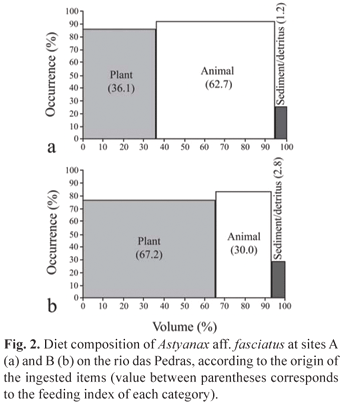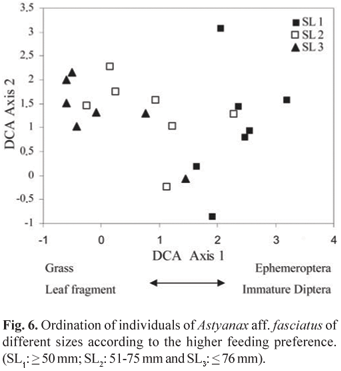This study described the feeding habits of the characin Astyanax aff. fasciatus. The diet compositions of specimens from two sites (A and B) on a river in Southern Brazil were compared according to the size of individuals and seasonal period. The collections were performed monthly from March 2005 to February 2006, where the stomach contents of 290 specimens were assessed. Food items for A. aff. fasciatus were basically composed of plants and insects, especially leaf fragments, seeds, fruits, filamentous algae, aquatic and terrestrial insects and insect fragments. At site A, the most common items were insect and plant fragments. Conversely at site B, plant fragments were more representative. In general, all items of animal origin showed the highest feeding index values at site A, whereas at site B detritus and grass items were more abundant. The composition of items varied seasonally, with higher diversity of items being recorded during the spring at both sites. Smaller individuals preferred items of animal origin, while the larger ones consumed mainly items of plant origin. According to its size, A. aff. fasciatus in this study may be considered a species with insectivorous tendencies when immature or herbivorous tendencies when adult. Nevertheless, its feeding habits may be flexible according to resource availability, showing wide ontogenetic, besides spatial and temporal variation.
Resource availability; Feeding flexibility; Omnivore; Niche shifts; Freshwater











